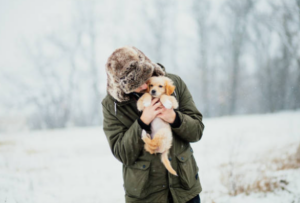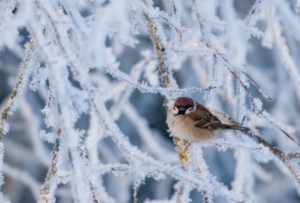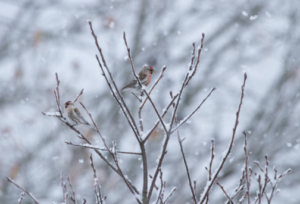Animal Rescue Stories in Winter

Winter brings with it a serene and magical landscape, but for many animals, it also ushers in a season of challenges. The cold temperatures, scarce food sources, and harsh conditions pose significant threats to wildlife. In recent years, the beauty industry has emerged as an unexpected yet powerful ally in supporting animal rescue efforts during this critical time. In this blog, we will explore heartwarming animal rescue stories, delve into the beauty industry’s role in wildlife conservation, and highlight the initiatives that are making a positive impact on the lives of animals in need.
Winter Woes for Wildlife
Winter paints a picturesque scene with its blankets of snow and frost-kissed landscapes, but beneath this serene exterior lies a challenging season for wildlife. As temperatures plummet and daylight hours diminish, a myriad of obstacles arise, posing significant threats to the survival of numerous species.
- Scarcity of Food
Winter marks a period of scarcity for many animals as natural food sources become elusive. For herbivores, finding nourishing vegetation becomes increasingly difficult, while carnivores face challenges in locating prey weakened by the harsh conditions.
- Challenging Weather Conditions
Extreme cold, snowstorms, and freezing rain can wreak havoc on wildlife habitats. Animals that are not adapted to harsh winter conditions may struggle to find suitable shelter, leading to exposure, frostbite, and even death.
- Limited Access to Water
As lakes and rivers freeze over, animals dependent on open water face difficulties in accessing essential hydration. This can lead to dehydration, malnutrition, and an increased vulnerability to predators.
- Migratory Challenges
Migratory species, including birds and certain mammals, face the daunting task of navigating long distances to reach warmer climates. Changes in migration patterns, influenced by climate change, further complicate their journey.
Amidst these challenges, heartwarming animal rescue stories emerge, showcasing the resilience of both wildlife and the compassionate individuals dedicated to their well-being.
- Marine Animal Rescues
Coastal regions witness a surge in marine animal rescues during winter. Whales, seals, and sea turtles may become stranded due to extreme weather events, entanglement in fishing gear, or injuries. Dedicated rescue teams work tirelessly to rehabilitate and release these creatures back into their natural habitats.
- Birds in Distress
Birds, especially those not built for frigid conditions, often find themselves in distress during winter. Rescuers encounter scenarios where waterfowl are trapped in icy ponds or birds of prey are malnourished due to a lack of available prey. Rehabilitation centers step in to provide necessary care, nursing these avian species back to health.
- Land Mammals Seeking Refuge
Deer, squirrels, and other land mammals face challenges such as food scarcity and threats from predators during winter. Animal rescue stories often involve these creatures being rescued from precarious situations, whether it’s providing supplementary food or creating safe spaces for their survival.
- Efforts to Protect Ecosystems
Conservationists and wildlife experts also focus on protecting entire ecosystems during winter. This includes efforts to preserve crucial habitats, maintain migration routes, and mitigate the impact of climate change to ensure the long-term well-being of diverse species.

The Beauty Industry’s Unexpected Role
The beauty industry might not be the first sector that comes to mind when thinking about wildlife conservation, but in recent years, it has become an influential force in supporting animal rescue efforts. From skincare to makeup brands, various companies are leveraging their resources and platforms to contribute to the well-being of animals.
The move toward cruelty-free beauty products has been a significant step in the right direction. Many beauty brands have embraced a commitment to ensuring their products are not tested on animals. This shift in consumer demand has not only led to more ethical practices within the industry but has also opened the door to collaborations with animal rescue organizations.
Several beauty brands have established meaningful partnerships with wildlife conservation organizations. These collaborations go beyond financial contributions, actively engaging in rescue missions, habitat restoration projects, and educational initiatives. The beauty industry’s involvement in wildlife conservation demonstrates a growing awareness of the interconnectedness between environmental well-being and beauty.
Initiatives Making a Difference
Embracing wildlife-friendly formulations represents a pivotal step for beauty brands committed to making a positive impact on the environment.
Eco-conscious Ingredients: Some beauty brands are taking a holistic approach to their formulations by carefully selecting eco-conscious ingredients. These may include sustainably sourced botanical extracts, responsibly harvested minerals, and organic oils. The emphasis is not just on efficacy but on minimizing the ecological footprint of the entire supply chain.
Biodegradable Packaging: In addition to mindful ingredient selection, beauty brands are increasingly adopting biodegradable and environmentally friendly packaging. This shift addresses concerns about plastic pollution and waste by ensuring that product packaging breaks down naturally, reducing its impact on wildlife habitats.
Chemical-Free Commitment: Clean formulations extend beyond cruelty-free practices to a commitment to excluding harmful chemicals. Brands actively avoid ingredients that may contribute to environmental degradation or harm wildlife. This approach not only benefits ecosystems but also aligns with the ethos of minimal environmental impact.
Beauty brands are recognizing the importance of actively contributing to wildlife sanctuaries and rehabilitation centers.
Financial Contributions: Initiating support programs involves direct financial contributions to wildlife sanctuaries. These funds assist in covering the costs of animal care, medical treatments, and the development of infrastructure needed to facilitate rehabilitation efforts. By channeling resources to these organizations, beauty brands play a crucial role in sustaining their operations.
Employee Volunteer Opportunities: Some beauty brands go beyond financial contributions by offering their employees opportunities to volunteer at wildlife sanctuaries. This hands-on involvement fosters a deeper connection between the brand and the conservation cause, allowing team members to witness firsthand the positive impact of their contributions.
Awareness Campaigns: Sanctuary support programs often extend to awareness campaigns initiated by beauty brands. Through various marketing channels, these campaigns shed light on the challenges faced by wildlife, promote the importance of conservation, and encourage consumers to get involved in supporting sanctuaries and rehabilitation centers.
Limited-edition product releases have become a creative avenue for beauty brands to raise funds for wildlife conservation.
Collaborations for a Cause: Beauty brands collaborate with wildlife conservation organizations to create limited-edition products, where a portion of the proceeds is dedicated to supporting the cause. This approach not only generates excitement among consumers but also provides them with an opportunity to make a positive impact through their beauty purchases.
Exclusive Packaging and Designs: Limited-edition releases often feature exclusive packaging and designs inspired by the wildlife being supported. This not only adds a collectible aspect to the products but also serves as a visual reminder of the brand’s commitment to conservation.
Seasonal Campaigns: Beauty brands frequently tie limited-edition releases to seasonal campaigns, aligning with the winter theme of animal rescue and wildlife protection. These campaigns leverage the spirit of the season to amplify the message and encourage consumer participation.
The influential reach of beauty influencers is harnessed to amplify wildlife conservation efforts.
Advocacy and Education: Beauty influencers use their platforms to advocate for wildlife conservation, sharing informative content about the challenges faced by animals during winter and the ongoing efforts to protect them. This educational approach helps raise awareness among their followers.
Partnerships with Conservationists: Influencers collaborate with wildlife conservationists and organizations, participating in campaigns, fundraisers, and on-the-ground initiatives. These partnerships provide influencers with firsthand experiences to share with their audiences, fostering a deeper connection to the cause.
Social Media Challenges: Innovative social media challenges centered around wildlife conservation gain traction, driven by beauty influencers. These challenges not only engage their followers but also encourage participation through donations or the purchase of specific products linked to the cause.
In the age of social media, beauty influencers have become powerful voices for causes they believe in. Many influencers are using their platforms to advocate for wildlife conservation, raise awareness about specific issues, and encourage their followers to support ethical and sustainable beauty brands.

How Consumers Can Contribute
As consumers, we hold the power to drive change within the beauty industry. By making informed choices and supporting brands with ethical and cruelty-free practices, we contribute to the demand for a more compassionate and environmentally conscious beauty market.
Spreading awareness about wildlife conservation and the beauty industry’s role in supporting animal rescue is crucial. Social media, blogs, and other platforms offer opportunities to share information, tell animal rescue stories, and inspire others to get involved.
Beyond product purchases, individuals can directly contribute to animal rescue efforts by volunteering at wildlife rehabilitation centers, participating in clean-up initiatives, or making donations to organizations dedicated to wildlife conservation.
The beauty industry’s involvement in wildlife conservation is a positive step toward a more compassionate and sustainable future. As consumers continue to prioritize ethical choices, the industry is likely to evolve further, leading to more impactful collaborations, initiatives, and innovations that benefit both beauty enthusiasts and the animal kingdom.
In conclusion, the beauty industry’s role in supporting animal rescue stories during the winter months is a testament to the positive impact it can have beyond the realm of cosmetics. By aligning with wildlife conservation efforts, beauty brands are not only shaping a more ethical industry but also contributing to the well-being of the creatures that share our planet. As consumers, influencers, and advocates, we can play an active role in this journey toward a harmonious coexistence between beauty and the wild. Let us embrace the power we hold to make a difference in the lives of animals in need and work collectively toward a future where beauty and compassion go hand in hand.

